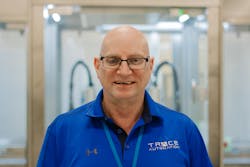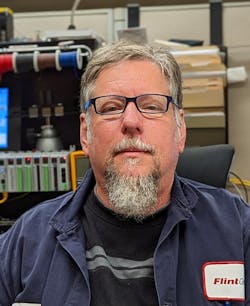OEMs remain loyal and true to their machine-buying customers and their suppliers
Components primarily find their way into machines in the design-and-build phase. Original equipment manufacturers (OEMs) select the devices, the hardware, the software, and make them part of the equipment’s critical systems. But how do machine builders and system integrators choose products? What are the considerations and criteria that go into those decisions?
Often, the end-user customer has preferences, as they need to monitor and maintain the equipment once it’s installed.
Greenfield campuses with no installed base offer more options. “If it’s a new facility and we’re allowed to choose the components, then we’ll choose based on the technical capabilities of the customer and the facility's requirements and location,” says Williams. “For instance, if the customer is in North America, we’re going to use a Rockwell Automation PLC because that is what is commonly used in North America. If the machinery is located outside North America, we will most likely use Siemens because that is what is commonly used worldwide, unless it’s in Japan. If it’s in Japan, we’ll use Mitsubishi or Omron because they are easier brands to get in that country. Other components—drives, motors, robots, vision—will be chosen similarly.”
“For me, performance and reliability are at the top of my list,” he explains. “There are a lot of manufacturers that try to be a one-stop shop for automation hardware. The problem with that model is the fact that, if you are a manufacturer selling and supporting multiple technologies, you’re not likely to be great at any of them. However, if the manufacturer is more focused on only a few technologies, they tend to be better in the performance and reliability arena.”
Mylnar finds this especially true of pneumatic companies. “Often a pneumatic company will offer all things pneumatic, vacuum and even some electric products,” he explains. “I would prefer to purchase only pneumatic products from these types of companies and leave electrical and vacuum to companies that are focused on such products. More often than not, the electric products are just brand-labeled by another manufacturer anyway, and it’s more about the pneumatic company having a low-cost electric product instead of a product that is well-designed and -engineered.”
You can often judge a manufacturer by the product warranty, adds Mylnar. “The longer the warranty, the better the product,” he reasons. “Also, don’t be afraid to have the manufacturer show you why the product is better than the other guy’s. Ask for a product demo. Ask them to prove the performance statements, if possible. Companies that sell on performance usually can prove it.”
Support is equally important, states Mylnar. “If it’s a new brand to you, support is going to be critical, especially for electric products or products that have to be programmed,” he cautions. “All too often people get lazy and choose the brand that’s a safe bet because everyone else uses that brand. The problem with that is often the market leaders for certain technologies become arrogant and won’t support you because people will buy their product regardless of support. In my experience, good support is hard to come by.”
Large companies and market leaders, however, often have deep resources, which sometimes makes for a good reason to rely on them, Mylnar notes. “Ask how you will be supported, what resources are available to you and how much they will cost,” he advises. “I’ve seen distributors sell customers on an automation app as being easy to deploy, and the customer buys it, thinking they will do it themselves. When they learn they can’t do it on their own and approach the distributor, they find the distributor will only help for a fee. Find out up front. This is especially true of robotics and specifically collaborative robotics.”
The best support comes from someone who understands automation as a whole, suggests Mylnar. “They are more likely to understand your needs holistically, which helps avoid major pitfalls and products being misapplied,” he warns. “In robotics, I see this a lot with vacuum end effectors. Often, people know robotics well but don’t understand vacuum technology, and they will misapply vacuum.”
Advanced high-tech distributors (AHTDs) are a helpful resource, with experts in all kinds of different automation technology. They can give recommendations and be held accountable for them, suggests Mylnar. “All too often, I see robots sitting in the corner because someone thought they could make it work, and it fails usually because of something simple that could have been avoided if the right person was looking at the app from the beginning,” he cautions.
From a feasibility and quoting perspective, Methods Machine Tools looks at guiding characteristics of its customers’ environments to help them nail down a machine and part process first, explains Connor Brown, systems engineer at Methods. “Typically, this includes part sizes and tolerances, and part volume over the course of the year,” he says.
“In the design, our process is led from the groundwork our proposals team lays out,” notes Zach Spencer, director of engineered solutions at Methods. “From the concept, we extrapolate the needs of the customer and lend those details to the interface. Since we are a Fanuc house, we primarily choose to go without a PLC for our automation products. Since we have a Fanuc robot talking to a Fanuc control, we can take advantage of having the Programmable Machine Control (PMC) available to us for a seamless integration or opt for an HMI/PLC interface if the customer process lends itself to require a next-level interface.”
About the Author
Mike Bacidore
Editor in Chief
Mike Bacidore is chief editor of Control Design and has been an integral part of the Endeavor Business Media editorial team since 2007. Previously, he was editorial director at Hughes Communications and a portfolio manager of the human resources and labor law areas at Wolters Kluwer. Bacidore holds a BA from the University of Illinois and an MBA from Lake Forest Graduate School of Management. He is an award-winning columnist, earning multiple regional and national awards from the American Society of Business Publication Editors. He may be reached at [email protected]

Leaders relevant to this article:





